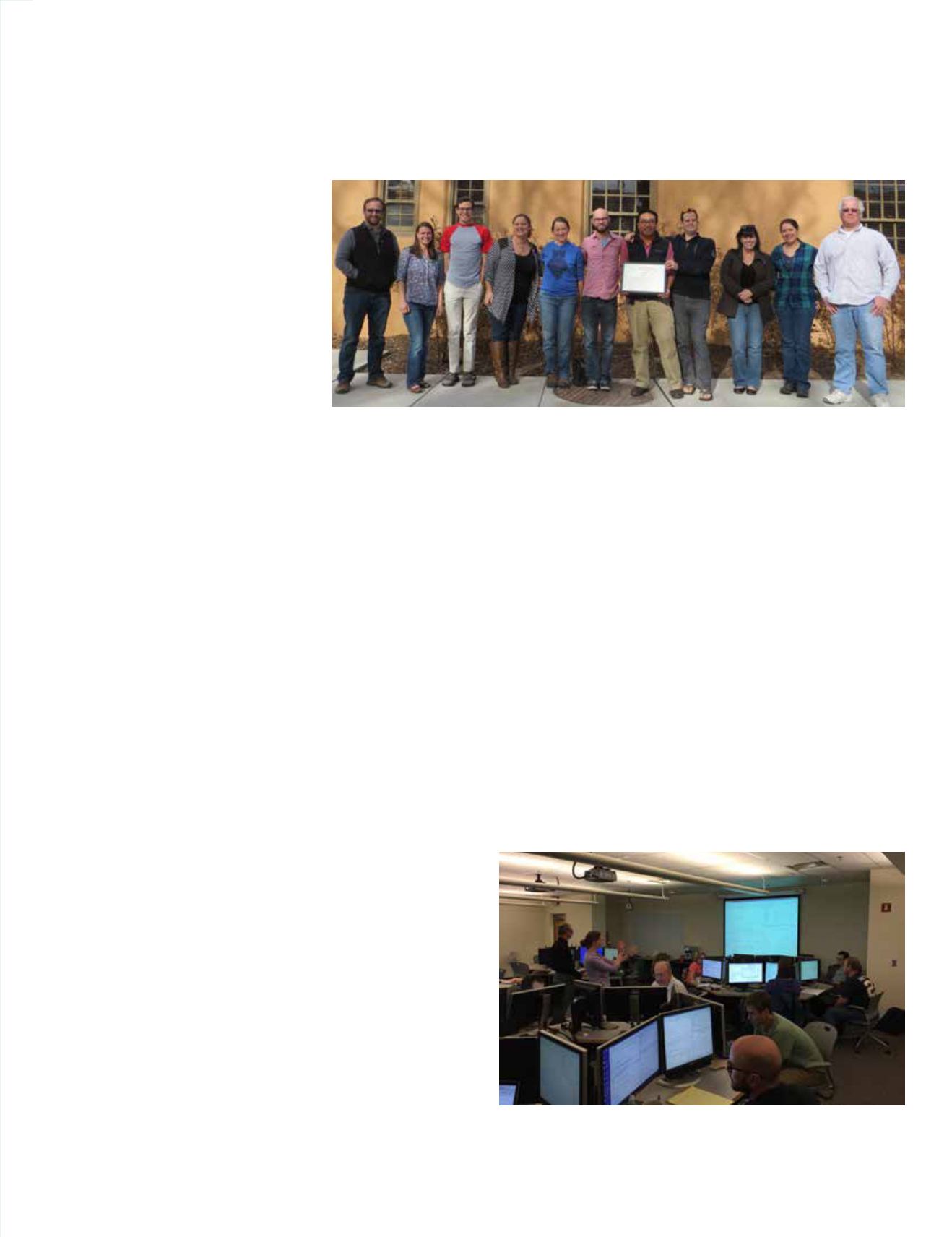
PHOTOGRAMMETRIC ENGINEERING & REMOTE SENSING
January 2015
11
PROFESSIONAL
INSIGHT
Introducing ASPRS’ newest
student chapter at the
University of New Mexico.
Christopher D. Lippitt, Faculty
Advisor, UNM ASPRS Student
Chapter, Vice President, Rio
Grande Chapter; and Su
Zhang, Chapter President,
UNM ASPRS Student Chapter
discuss the importance
of student chapters to the
industry.
UNM ASPRS STUDENT CHAPTER
UNM ASPRS Student Chapter members after receiving their charter.
Why did you decide to develop a student chapter at UNM?
Chris — We started as a venue to facilitate cooperation
and self-determination amongst our GIScience students.
Workshops, trainings, visits to facilities, hosting speakers, all
of the activities of the student chapter allow a greater number
of students to be exposed to greater number of opportunities
and to determine the course of their own education, network,
and career. We’ve already hosted a workshop focused on the
use of R for spatial analysis and data handling thanks to
Steve Sesnie and Sarah Lehnen of the US Fish and Wildlife
Service here in Albuquerque.
We’ve got plans to establish a Volunteer Hazard Mapping
Corp (VHMC) through the chapter, modeled after the VHMC
at San Diego State University. I for one can’t wait to see what
they do with the chapter next.
How is having a student chapter beneficial to the students?
Chris — In one word: exposure - to opportunities, to industry,
to professional networks, to the culture of their intended
industry, to scholarships. The chapter has the potential
to allow a group of students to strategically augment their
skillsets and professional network beyond those available in
their formal program of study.
Su — From the standpoint of a student, the chapter works
as a nexus for us to know other professionals, other faculty
members, and other students. In a traditional academic
environment, the only way for a student to know others
who have the same interest through faculty members or
classmates. Like Chris said, the student chapter will provide
massive exposure benefits to any students who are interested
in geospatial technologies.
How was the process of setting up the student chapter
with ASPRS?
Su — It was a wonderful experience setting up the student
chapter with ASPRS. The officers from the ASPRS Rocky
Mountain Region helped us a lot with the whole process.
They walked us through each step of the process and even
helped us navigate the bumps that popped up along the way.
They were always ready to answer questions we had and
they took care of any issues right away. We want to specially
thank Harold Cline, Michaela Buenemann, Jeff Young, and
Sokhan Hing for their enormous help.
What are the goals of the chapter?
Su—The chapter has identified a number of goals, including:
(1) advancing scientific knowledge in the disciplines of photo-
grammetry and remote sensing; (2) working with governmen-
tal and private organizations in promoting programs related
to photogrammetry and remote sensing to the general public;
(3) expediting the exchange of knowledge and ideas among
the members of ASPRS and with those of other national and
international organizations with similar or related interests;
(4) serving the members as a central source of information
related to photogrammetry and remote sensing.
A UNM ASPRS organized workshop focused on the use of R for
spatial analysis and data handling. Steve Sesnie and Sarah Lehnen
of the US Fish and Wildlife Service instructed the day long workshop.
I N T E R V I E W


